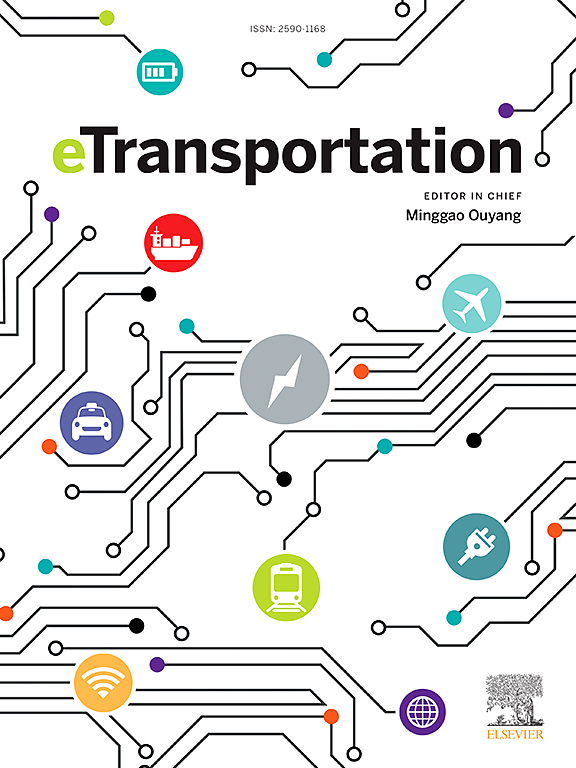锂离子电池中过量固体电解质界面生长导致电池膨胀失效的机理
IF 17
1区 工程技术
Q1 ENERGY & FUELS
引用次数: 0
摘要
揭示锂离子电池老化失效机理对延长电池寿命、提高电池安全性具有重要意义。本文研究了圆柱电池深度老化导致固体电解质界面膜过度生长和电池失效的机理。首先,设计了多个18650型圆柱电池加速老化实验。差分电压分析(dV/dQ)和电化学阻抗谱(EIS)用于非破坏性地研究电池退化机制。其次,对不同降解程度的电池进行拆解,利用扫描电镜(SEM)、液氮冷却氩离子截面抛光和x射线光电子能谱(XPS)技术研究电极表面和截面SEI演化。当电池容量衰减小于30%时,SEI厚度和电阻明显增加。最后,揭示了圆柱电池石墨负极表面SEI过度生长导致金属壳膨胀破裂失效的机理。这项工作为锂离子电池整个生命周期的安全服务、管理和剩余价值评估提供了至关重要的见解。本文章由计算机程序翻译,如有差异,请以英文原文为准。
Mechanism of battery expansion failure due to excess solid electrolyte interphase growth in lithium-ion batteries
Revealing the aging and failure mechanisms of lithium-ion batteries is crucial for extending battery life and improving battery safety. This paper presents a mechanism of solid electrolyte interphase (SEI) film overgrowth and battery failure caused by deep aging of cylindrical batteries. Firstly, multiple 18650-type cylindrical battery accelerated aging experiments were designed. Differential voltage analysis (dV/dQ) and electrochemical impedance spectroscopy (EIS) are used to investigate battery degradation mechanisms non-destructively. Secondly, batteries under different degradation degrees were disassembled, and the scanning electron microscope (SEM), liquid nitrogen cooled argon-ion cross-sectional polishing, and X-ray photoelectron spectroscopy (XPS) technology were used to investigate the surface and cross-sectional SEI evolution of electrodes. Obvious increases in SEI thickness and resistance occur when the battery capacity fade is less than 30 %. Finally, the mechanism of excessive growth of SEI on the graphite negative electrode surface of the cylindrical battery, leading to the expansion and rupture failure of the metal shell, was revealed. This work provides crucial insights for the safe service, management, and residual value assessment of lithium-ion batteries throughout their entire lifecycle.
求助全文
通过发布文献求助,成功后即可免费获取论文全文。
去求助
来源期刊

Etransportation
Engineering-Automotive Engineering
CiteScore
19.80
自引率
12.60%
发文量
57
审稿时长
39 days
期刊介绍:
eTransportation is a scholarly journal that aims to advance knowledge in the field of electric transportation. It focuses on all modes of transportation that utilize electricity as their primary source of energy, including electric vehicles, trains, ships, and aircraft. The journal covers all stages of research, development, and testing of new technologies, systems, and devices related to electrical transportation.
The journal welcomes the use of simulation and analysis tools at the system, transport, or device level. Its primary emphasis is on the study of the electrical and electronic aspects of transportation systems. However, it also considers research on mechanical parts or subsystems of vehicles if there is a clear interaction with electrical or electronic equipment.
Please note that this journal excludes other aspects such as sociological, political, regulatory, or environmental factors from its scope.
 求助内容:
求助内容: 应助结果提醒方式:
应助结果提醒方式:


